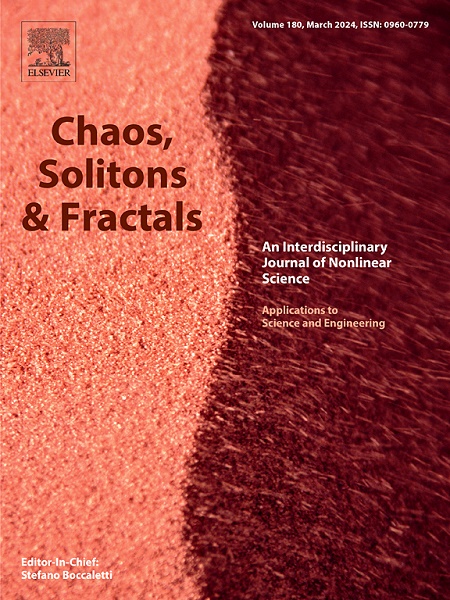空间扩散条件下细菌-宿主相互作用基因调控网络的有限时间稳定性分析
IF 5.6
1区 数学
Q1 MATHEMATICS, INTERDISCIPLINARY APPLICATIONS
引用次数: 0
摘要
本研究探讨了Dirichlet边界条件下斑马鱼与大肠杆菌相互作用中包含空间扩散的时滞遗传调控网络的有限时间稳定行为。在大肠杆菌入侵斑马鱼身体的背景下,这两个系统之间的相互作用进行了检查。代表斑马鱼的系统是稳定的,而大肠杆菌系统最初是不稳定的。它们相互作用后,两个系统逐渐达到稳定状态。我们提出了一个相互作用的耦合模型,构造了一个新的Lyapunov-Krasovskii泛函,并利用二次延迟划分方法推导了相互作用的遗传调控网络的稳定性准则。所建立的稳定性判据比已有判据保守性小,使得时滞导数的上界不小于1。根据确定的评价标准,细菌与宿主的相互作用越强,抑制细菌或治疗所需的时间就越长。最后,进行了数值模拟来说明mRNA和蛋白质浓度轨迹,验证了所提出标准的准确性。本文章由计算机程序翻译,如有差异,请以英文原文为准。
Finite-time stability analysis of gene regulatory network in bacteria-host interactions with spatial diffusion term
This study explores the finite-time stable behavior of time-delay genetic regulatory networks incorporating spatial diffusion in the interactional between zebrafish and Escherichia coli under Dirichlet boundary conditions. The interaction between these two systems is examined in the context of E. coli invading the zebrafish body. The system representing the zebrafish is stable, while the E. coli system is initially unstable. After their interaction, both systems gradually reach a stable state. We propose an interacting coupled model, construct a novel Lyapunov-Krasovskii functional, and utilize the secondary delay partitioning method to derive stability criteria for the interacting genetic regulatory networks. The stability criteria we establish are less conservative than existing criteria, allowing the upper bound of the time delay derivative to be not less than 1. According to the defined evaluation criteria, the stronger the interaction between bacteria and the host, the longer the time required to suppress the bacteria or for treatment. Finally, numerical simulations are conducted to illustrate the mRNA and protein concentration trajectories, verifying the accuracy of the proposed criteria.
求助全文
通过发布文献求助,成功后即可免费获取论文全文。
去求助
来源期刊

Chaos Solitons & Fractals
物理-数学跨学科应用
CiteScore
13.20
自引率
10.30%
发文量
1087
审稿时长
9 months
期刊介绍:
Chaos, Solitons & Fractals strives to establish itself as a premier journal in the interdisciplinary realm of Nonlinear Science, Non-equilibrium, and Complex Phenomena. It welcomes submissions covering a broad spectrum of topics within this field, including dynamics, non-equilibrium processes in physics, chemistry, and geophysics, complex matter and networks, mathematical models, computational biology, applications to quantum and mesoscopic phenomena, fluctuations and random processes, self-organization, and social phenomena.
 求助内容:
求助内容: 应助结果提醒方式:
应助结果提醒方式:


